For the provided DORR DANUBIA Mirror 500mm / 1: 8,0 T2 lens many thanks the store ProFotoSalewhere you can find many new and used lenses for different systems, including similar manual lenses.
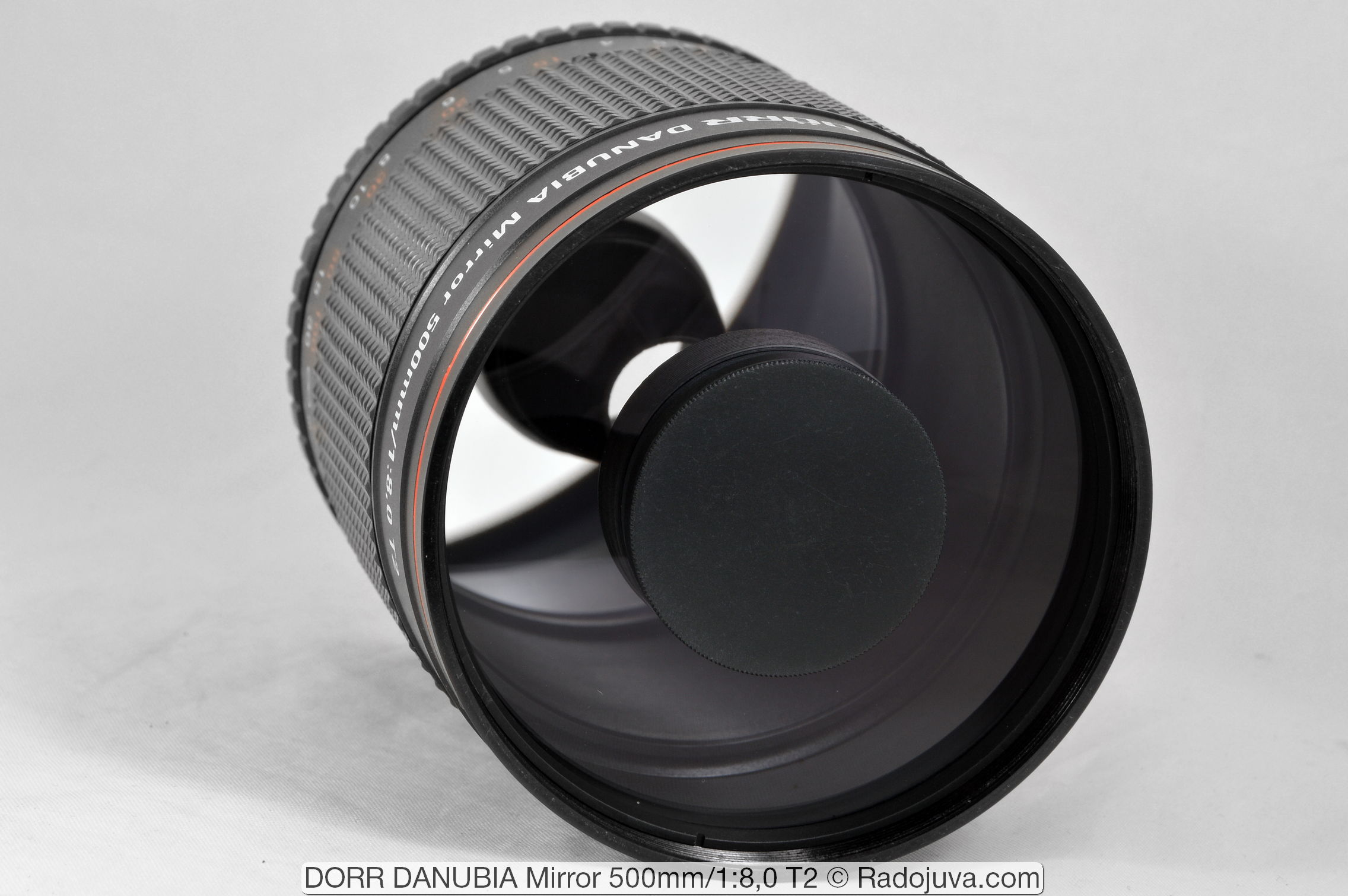
DORR DANUBIA Mirror 500mm F / 8 T2. increase.
In short
The DORR DANUBIA Mirror 500mm / 1: 8,0 T2 is an inexpensive mirror lens with an interchangeable shank system. It is a state of the art manual focus super telephoto lens.
It attracts with its huge focal length and low weight paired with compact dimensions.
The mirror-lens design imposes a number of limitations and features inherent in similar lenses: the inability to adjust the aperture, small chromatic aberration, low contrast and 'bagels' in the out-of-focus area.
The lens supports the T2 interchangeable adapter system, with which the Dorr Danubia 500/8 can be adapted to most modern cameras.
Danube Is simply the brand under which this lens is marketed by the German company DORR.
Main technical characteristics of DORR DANUBIA Mirror 500mm / 1: 8,0 T2
| Name of instances from review | On the case 'DORR DANUBIA Mirror 500mm / 1: 8,0 T2' |
| Basic properties |
|
| Front Filter Diameter | 72 mm + lens can use small filters on the bayonet side, with a diameter of 30.5 mm |
| Focal length | 500 mm |
| Zoom ratio | 1 x (this is fix) |
| Designed by | for cameras with different mounts. In the review, a lens with a M42 x 1 / 45.5 thread mount |
| Number of aperture blades | no iris control |
| Tags |
|
| Diaphragm | fixed, f / 8.0. In this case, the real aperture in T-stops is at the level of T / 10.0-13.0 |
| MDF (minimum focusing distance) | 1.72 meters, maximum magnification ratio 1:2.7 |
| The weight |
|
| Optical design | Mirror-Lens |
| Lens hood | Not included in delivery, must be screwed into the thread of the front filter |
| Period | Around 2009 to our time |
| Manufacturer country | Unknown, most likely made in China |
| Price |
I assume that the Dorr Danubia 500/8 is a rebranding of some other little-known Chinese or South Korean lens, for example, like this 500/8. In turn, Chinese know-how like two drops of water are similar to Samyang MC Mirror Lens 1: 8.0 f = 500mm.
Appearance
The Dorr Danubia 500/8 is similar to other similar SLR lenses.
Assembly, control, focus
Dorr Danubia 500/8 came to me in a new state. The lens comes in a small box, the package includes a soft case for transportation.
Lens body It is made qualitatively. The focus ring has a very wide anti-slip insert made of hard rubber or similar material.
When you pick up the Dorr Danubia 500/8, you are immediately surprised by its low weight, which is only 340-350 grams. For a 500mm lens, this weight is a piece of cake. The light weight plays a cruel joke here, when you try to shoot handheld, the picture in the viewfinder trembles very much, and it is almost impossible to achieve a sharp image at shutter speeds around 1/400.
Dorr Danubia 500/8 uses 72 mm diameter filters. Additionally, the lens has the ability to use filters that are installed on the side of the rear lens. The diameter of such filters is 30.5 mm. 3 light filters included: KM-500 ø 30.5 SKYLIGHT 1A (warm), KM-500 ø 30.5 ND2X (neutral), KM-500 ø 30.5 ND4X (neutral). The filters are packed in a small box.
The front protective cover is plastic, without latches, screwed into the thread under the filters.
In addition to this lens, you can buy a special nozzle, which turns it into a spyglass.
The Dorr Danubia 500/8 focus ring rotates approximately 270 degrees (3/4 of a full turn). During focusing, the trunk of the lens travels forward and rotates along with the thread for the filters. The rotation of the focus ring is smooth and pleasant, but in some places the ring is noticeably rubs. The focus ring has a small 'infinity span'.
On the body there is a focus distance scale and a zoom scale for macro photography. The minimum focusing distance is only 1.72 meters, which allows you to shoot at a maximum magnification of 1: 2.7, which is very, very good for such a lens.
It's important: the lens uses an interchangeable shank system T2 (T2-mount М42 X 0.75 / 55). To install the Dorr Danubia 500/8, use the shank (read adapter) T2 -> desired system. For instance, T2-> M42, T2-> Nikon F, T2-> Canon EF etc. This adapter does not come with this lens.
It's important: T2 thread type M42 X 0.75 / 55 is very similar to regular M42 X 1 / 45.5. If they are confused, then the adapter 'M42 X 1 / 45.5-> the desired system' will jam on the T2 thread of the M42 X 0.75 / 55 type.
Image quality and sample photos on Nikon FX
The image quality with this lens is rather mediocre, but its optical properties are primarily associated with the mirror-lens design. Weak contrast and sharpness, fear of flare. But practically absent chromatic aberrationand there are also funny 'bagels' in the out-of-focus area.
Sample photos with RAW source files for review prepared by the photographer Natalya Romanenko (500px). Convert RAW source files with Nikon D700 the original Nikon Capture NX-D v 1.4.6 utility.
Download RAW c source photos Nikon D700 can at this link (25 files, 300 MB).
And a few frames from a tripod to a camera with an APS-C sensor. Even with a tripod through an electronic viewfinder with 5 or 10x magnification (for accurate focusing), the picture shakes very much during focusing.
Results
Dorr Danubia 500/8 optically turned out to be much better than Samyang MC Mirror Lens 1: 8.0 f = 500mm... Most likely there is a huge variation in the quality of manufacture of such inexpensive Chinese and South Korean lenses. These lenses often have no name at all on their bodies and are simply designated '500mm f / 8', some are sold under obscure brand names (eg 'Danubia' from this review).
Comments on this post do not require registration. Anyone can leave a comment. Many different photographic equipment can be found on AliExpress.
Material prepared Arkady Shapoval. Training/Consultations | Youtube | Facebook | Instagram | Twitter | Telegram

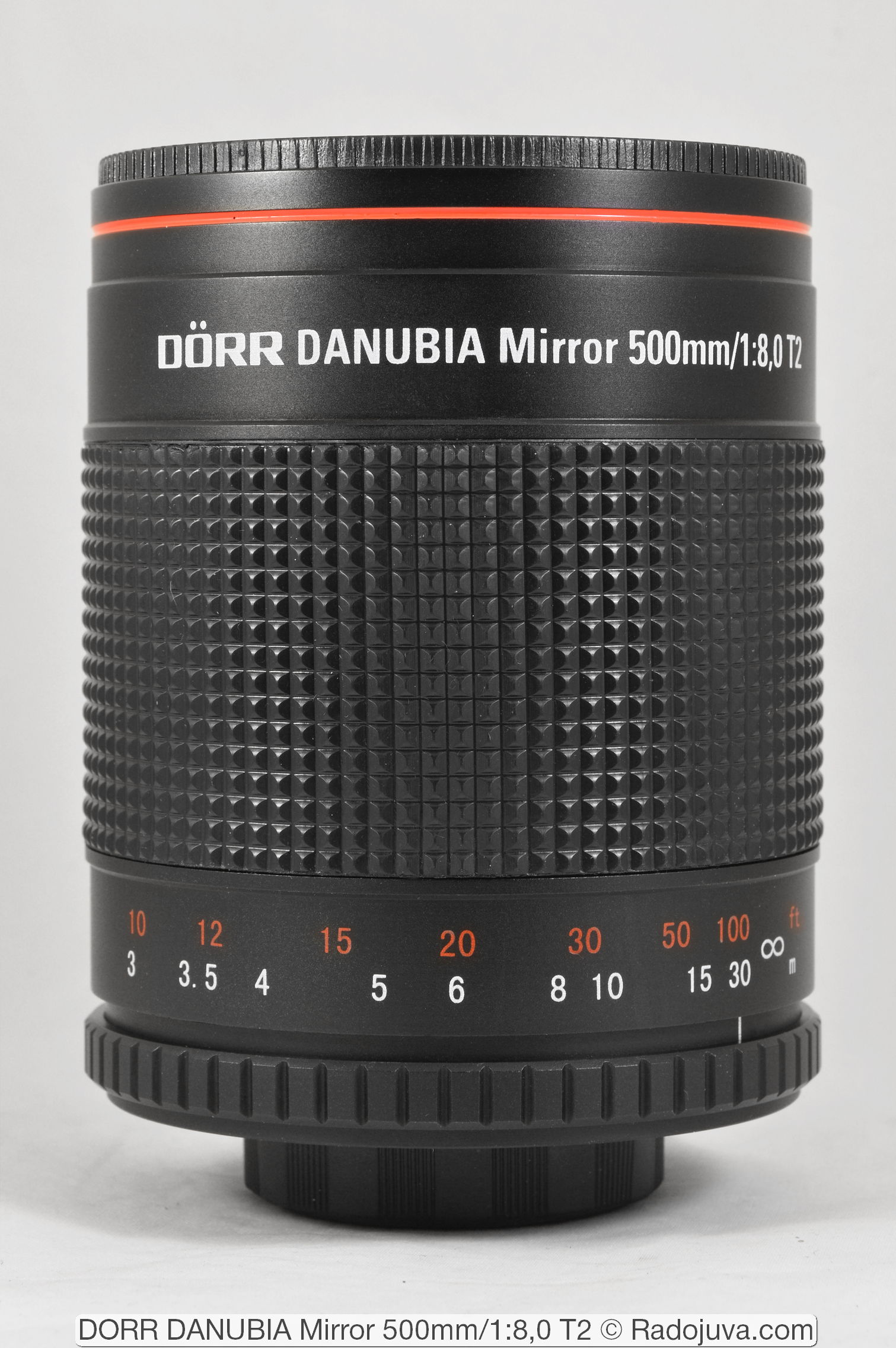
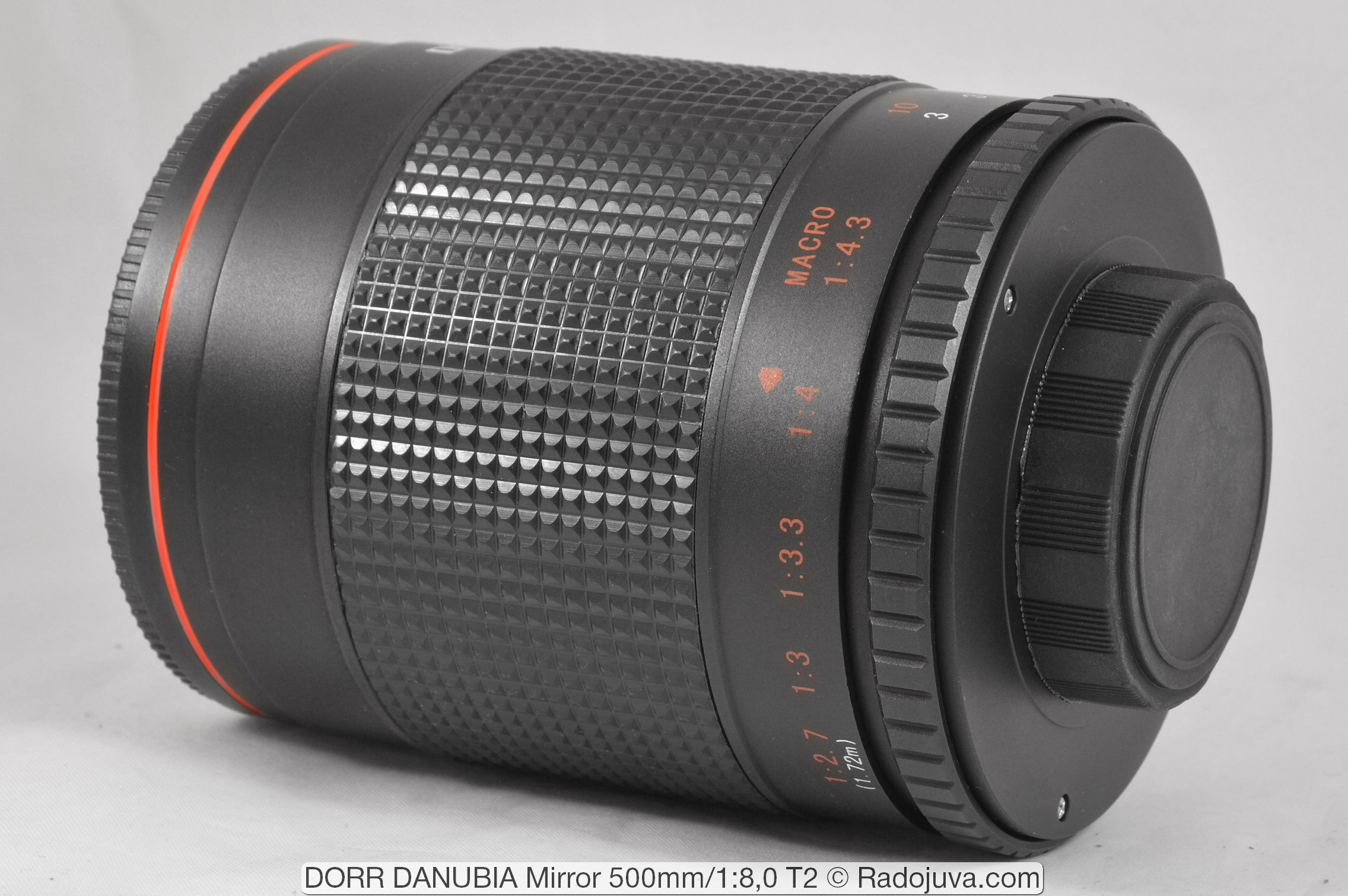
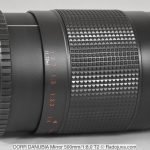
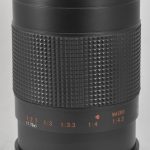
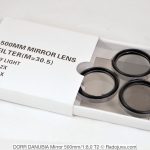
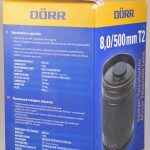
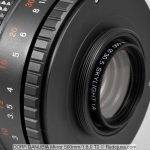

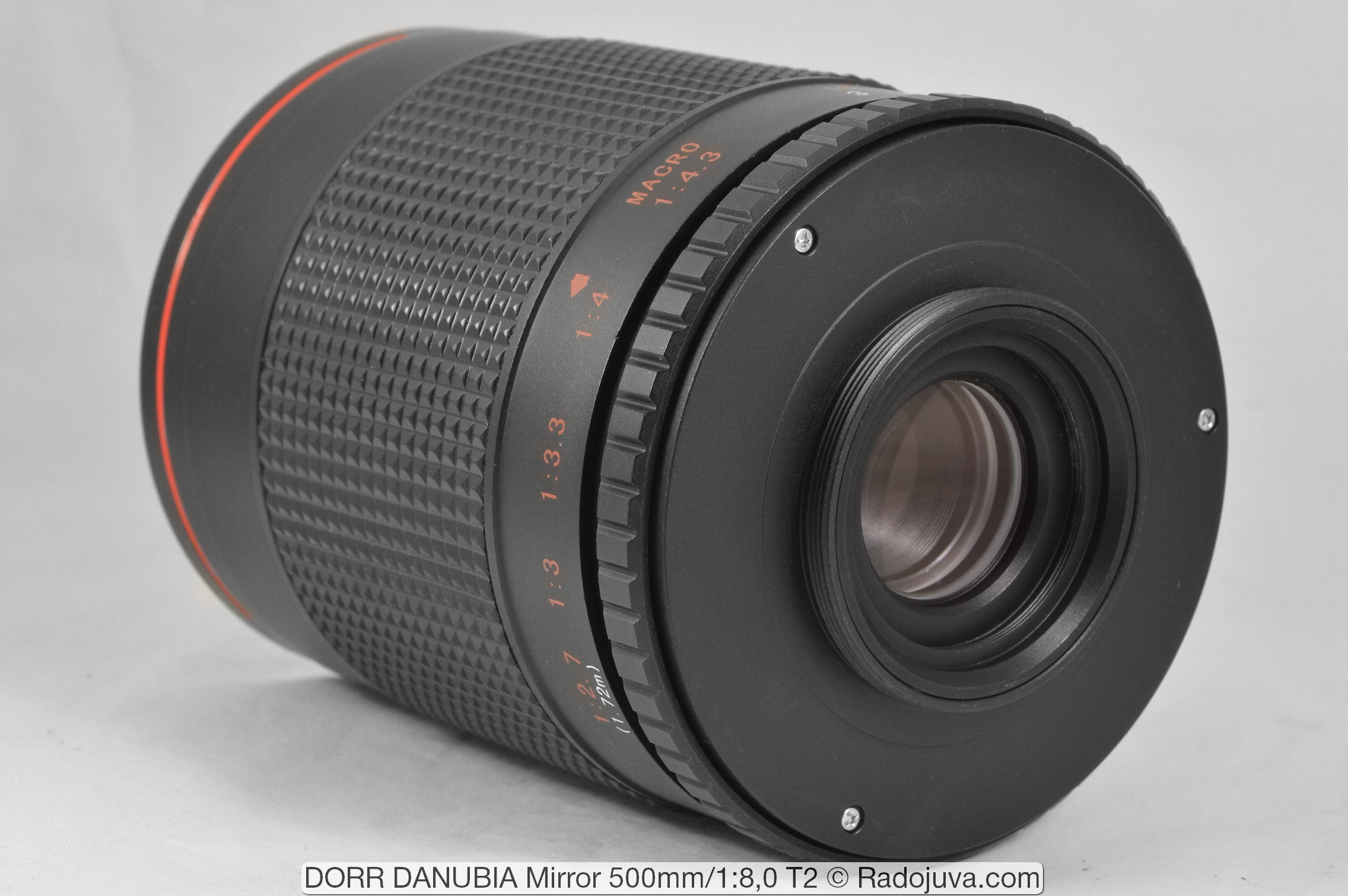
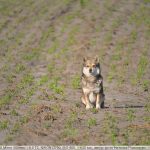
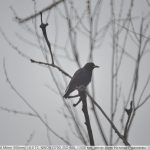
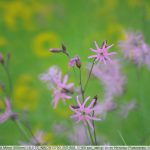
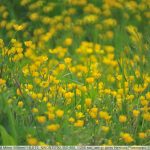
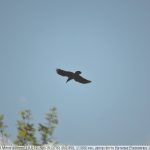
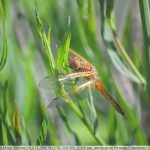
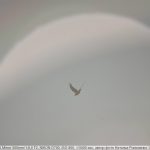

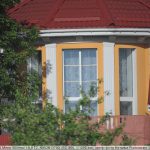
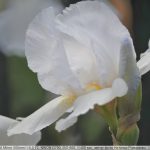
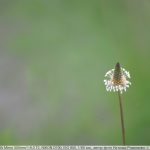
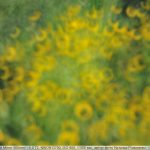


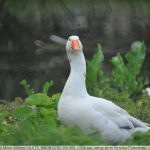
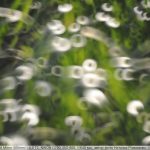
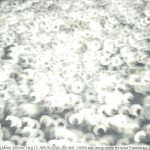
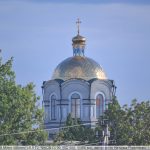
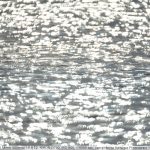
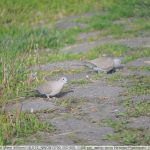
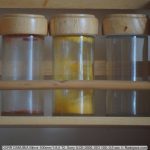

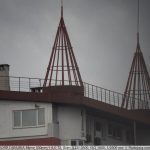
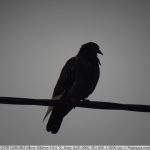
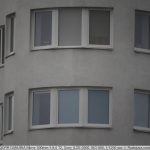
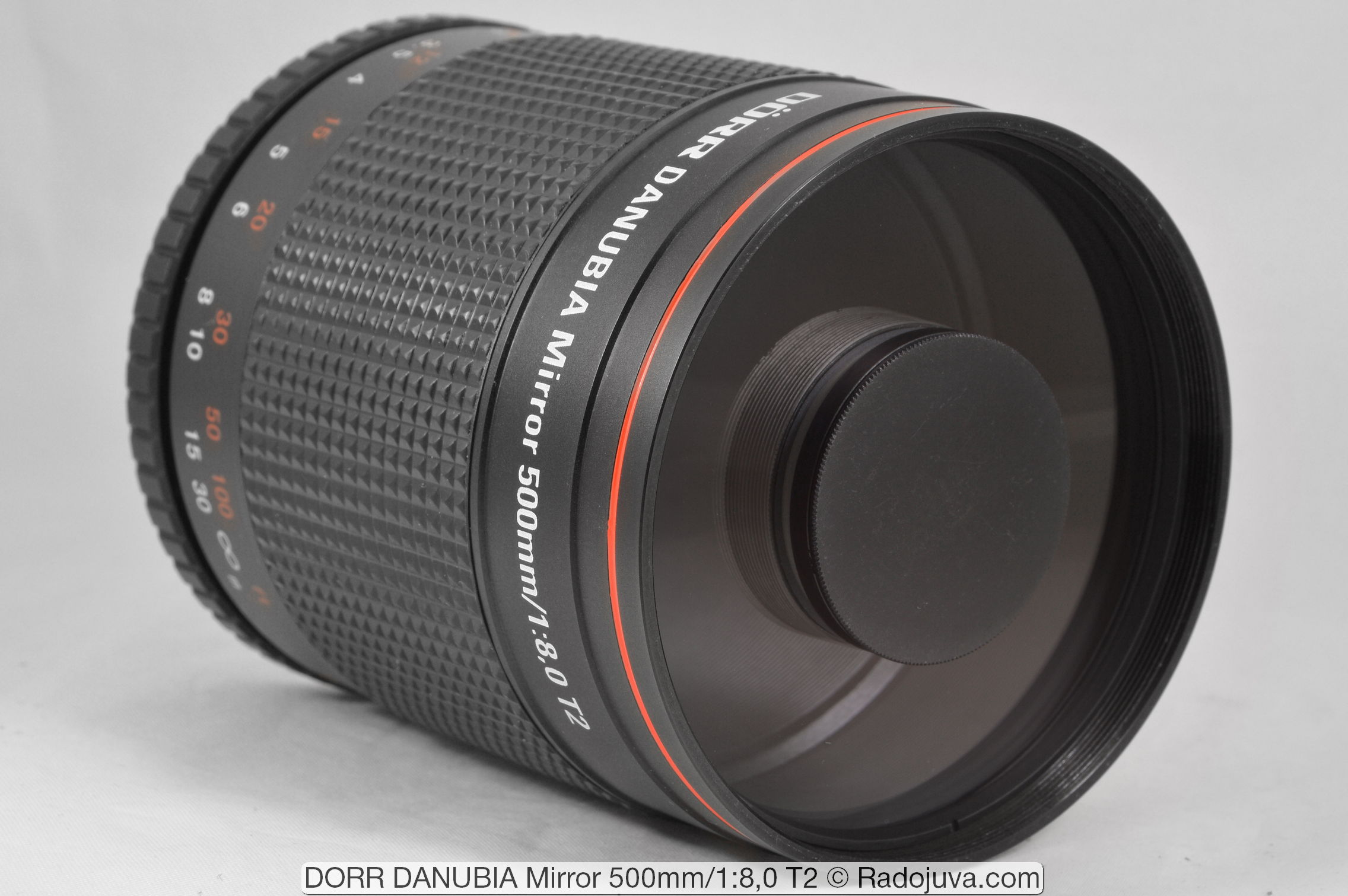

It would be interesting to test the Carl Zeiss Mirotar 500 mm f / 8 C / Y and compare it with budget counterparts. It costs a lot, but is there a significant difference, given the limitations of such a design?
Thanks for the review. On the 4th frame (with yellow flowers) it seems like trying to twist the background)
And almost all EVILs have very large vignetting. Then they can easily twist the background. The fact is that a very small field can be obtained in a simple EVIL scheme (like Maksutov-Cassegrain) - it depends on the size of the “patch” of the secondary mirror, which they try to make smaller in order to reduce the central shielding ...
Examples of photos unexpectedly surprised me after I personally tested from Z.L.O.
Here, apparently, it was wildly lucky with a copy or the brand had better quality control than Samyang.
Because Syoma 500/8 is just tin - the worst I've ever seen. But there is still a full frame on a bold pixel, so maybe this also makes the situation not hopeless in terms of processing
For me, shooting on Danubia was a real challenge, despite the fact that I used to shoot heavier telephoto cameras and got normal results. I shot 1200 frames with the same lens, among them there are shots of the heron, which did not work out, but only the selected 20 frames turned out. So yes, I agree with you, Z.L.O. still evil)))))) But his picture is still awesome ... Just like in photo number 4, the background is very beautifully blurred
You are just great. Apparently this lens is “wildly lucky” with the photographer. The output of good personnel is simply depressing.
I have in my possession three EVILS, MC MTO-11SA, 3M-5A-ms and 3m-6a at the latter, during the bulkhead and cleaning there was a defocus, but after correct installation and correct pressing of the mirror, without fanaticism, the focus suits completely. The lenses are quite working, albeit dreary to use, a reliable tripod is required, ideally wooden from the theodolite of the times of the USSR, and even from a tripod, it is very difficult to catch focus on the MTO-11SA, it's still 1000 mm. and everything trembles, the rest are easier. Photos require mandatory processing, but after that they show very good characteristics in focus, sharpness and contrast, a kind of “film photo” is obtained.
It is very fortunate that RAW files were posted in the review, everyone can "twist" them himself and make sure that the mirror-lens scheme has the right to "life", especially based on the price / quality ratio.
But can I clarify where the lens was sorted out? I can’t find a master in St. Petersburg who would take on Rubinar 1000 ((
Sofia, if you don’t solve your question - write to me in FB, preferably in a personal.
I bought on Avito from one seller at once three, about two years ago.
The opinion of some (the majority?) That EVIL is useless lenses “to play with” is unfair.
Yes, it is not easy to shoot with them - and the percentage of technically suitable frames is several times less than with a lens lens with a smaller focal length, and thorough processing is required, but ... how else to fit such a focal length into a compact lightweight body?
At the very were:
- ZM-7 300 mm f / 5.6;
- Tamron SP 500 mm f / 8 Adaptall-2 model 55BB.
Now in stock - Tamron SP 350 mm f / 5.6 Adaptall-2 model 06B. Despite the difficulties of shooting (he shot it hand-held on a cropped Sony NEX-5R without a viewfinder;)) - when it comes into focus and in the absence of blur - quite a sharp, contrasting and colorful picture!
Is it suitable for astrophotography? On the crop?
Theoretically suitable, like any other telephoto. But you have to adapt to it. It is necessary to shoot at short exposures, since the angle of view is very small and even on a tripod, after the shutter is activated, fading oscillations of the image on the monitor are noticeable for 3 ... 5 seconds. (This is where an electronic shutter would come in handy!)
Filmed with a D80 crop on a ZM-6a. It's a little brighter (F / 6.3). I even used a x2 converter. The result was the equivalent of a focal length of 1500 mm and f / 12.6. I don't want to bully ISO - noise, grain ... Therefore, to avoid blurring, I shot at short shutter speeds and then pulled the exposure in Photoshop from RAV (forget about native Jpeg).
Yes, there are parasitic overexposed spots, but this is better than with exposures of several seconds (Velbon EX-630 tripod + 10kg weight + IFK remote control) - the stars are displayed with strokes.
For the distant future, I plan to make a pillar star tracker such as barn door tracker (I don't know how it will be in Russian) - will this help?
well, the stars in the form of strokes were not due to the movement, but the rotation of the Earth) - the celestial sphere is displaced relative to the observer, and the greater the focal length, the faster it will be noticeable for the equipment. There is a “600 Rule” - we divide the number 600 by the focal length, and we get the maximum shutter speed in seconds for this lens when shooting stars.
It is better to use lens aperture systems.
Mirror and mirror-lens systems were originally intended for visual astronomical observations (telescope of Newton, Cassegrain, Schmidt, even Lomonosov). Centuries later, with the advent of photography, they began to be used for astrophotography. Their main advantages are the absence of chromatic aberrations and low manufacturing costs. You can even grind a spherical mirror manually, with due diligence and accuracy.
And astrophotography has never been a simple science. Get ready for massive mounts, clockworks, guides, hectic atmosphere and other amenities of astrophotographers life.
However, with an eyepiece, as a telescope, this lens will surpass in quality any refractor lens of similar aperture and price. It is not for nothing that the largest telescopes are reflectors. So far, no one has succeeded in creating a refractor with a diameter of 6 meters.
I myself use MS ZM-5SA (500mm / 8) and MS ZM-7K (300mm / 5,6).
Once there was a MTO-11SA MC (1000mm / 10), but sold due to its low demand.
In the picture, the described DORR is very similar to the domestic "Snake", but lighter, and the MDF is more comfortable.
For best results when shooting EVIL, you need a combination of several important conditions at once.
1. Bold pixel (from 6 to 10 megapixels on crop or 12-20 megapixels on full frame). The fatter the better.
2. Low-noise high-ISO matrix (such as Sony a7sll)
3. Stability on the matrix (such as Sony a7sll or Pentax)
4. Pretty deep hood for telephoto
5. It is desirable to have a tripod socket on the lens - it allows you to more competently do weight distribution and use all sorts of pribluda like monopod, butt, etc.
6. Live view (on many old cameras it is not).
7. If you shoot with a DSLR, it is advisable to use an eyepiece magnifier with a magnification of 1,6 for speed. Saves precious seconds compared to live view.
Well, if you were once involved in shooting sports, then the ability to freeze and hold your breath will help you.
A range of inexpensive old bold pixel cameras are a sensible alternative to expensive new ones. But you will have to shoot mostly in bright sunny weather.
I have a mirror-lens Rubinar 1000 mm. It does not give a perfectly sharp image, although I use a tripod (FSHU, iron Soviet), a remote control, and raise the mirror in advance. Canon 5D camera (“first penny”, with large pixels). I tried to take it to the service, because the image quality is not satisfied, but all the masters look with amazement and do not understand what to do with it, although the city is large (St. Petersburg). I took it initially for astro photography, I am attaching a photo of the Moon, it is better to take it off so far. After reading the comments in this thread, I thought that this is the way it should be, 1200 frames to get 20 good ones, I have not filmed yet)
and day option
The hardest lens to work with as a photographer. This is one of the most advanced thousandths available today. On the crop, it is equivalent to 1500 - 1600 mm in full frame. Hand-held photography is practically excluded. The lens has a love for bright contrasting sunlight, as well as for shooting in clean air - in the mountains, at sea, outside the city up to the moon. On a plain flooded with sunlight, currents of heated rising air are very disturbing, so it is better to shoot into the distance from a hill, or at a distance of up to 200-500 meters. A good tripod, live view and a remote control for the shutter release are desirable. In addition to shooting the Moon and other astro-objects, it is sometimes used for spy photography in buildings opposite, etc. (if there is not enough budget for a faster telephoto lens).
In ordinary life, it is of interest if it is used not only for photography, but also as a portable mini-telescope when leaving the city, and a powerful telescope with appropriate nozzles (well, if there are children in the family).
In terms of photography, you can shoot a nest of a shy bird in an open area in close-up, without fear of greatly disturbing it. For lovers of ringlets in bokeh, it is better to work with 300 mm and 500 mm mirrored lenses. The field corrector in the back is already included in the optical circuit of the lens in order to stretch the sharp image to a full frame (actually a converter with a magnification of 1,3), so using an additional converter of 2 degrades the final picture.
Needs serious post-processing of the received RAW (contrast, color saturation).
It is very sensitive to temperature changes, in winter it takes at least an hour for thermal stabilization.
You need to correctly and accurately adjust the position of the mirrors. in Soviet optics they were very often pulled in during assembly. in addition, such optics can be correctly configured only at any one temperature. or in a rather narrow temperature range, because the expansion / contraction of the metal of the case has a great influence on the alignment of the entire optical system.
Sofia, if you live in St. Petersburg, consult about the repair with the famous photographer Pavel Boyarov. I believe that he will give you practical advice.
Here, for comparison, the Moon on Canon Powershot SX530HS, maximum optical zoom 50s, equivalent focal - 1200 mm. It seems not bad, the optical stabilizer allows you to shoot this even handheld, but the matrix in it is terrible, all in "craters". I sold it, and I have no regrets.
A very detailed review of EVIL.
I advise you to carefully read.
https://traditio.wiki/Рубинар
From the review it is clear that you should not spend money on this trash. Thanks to the author for the work!
Thank you Arkady!
As always sensible and thorough!